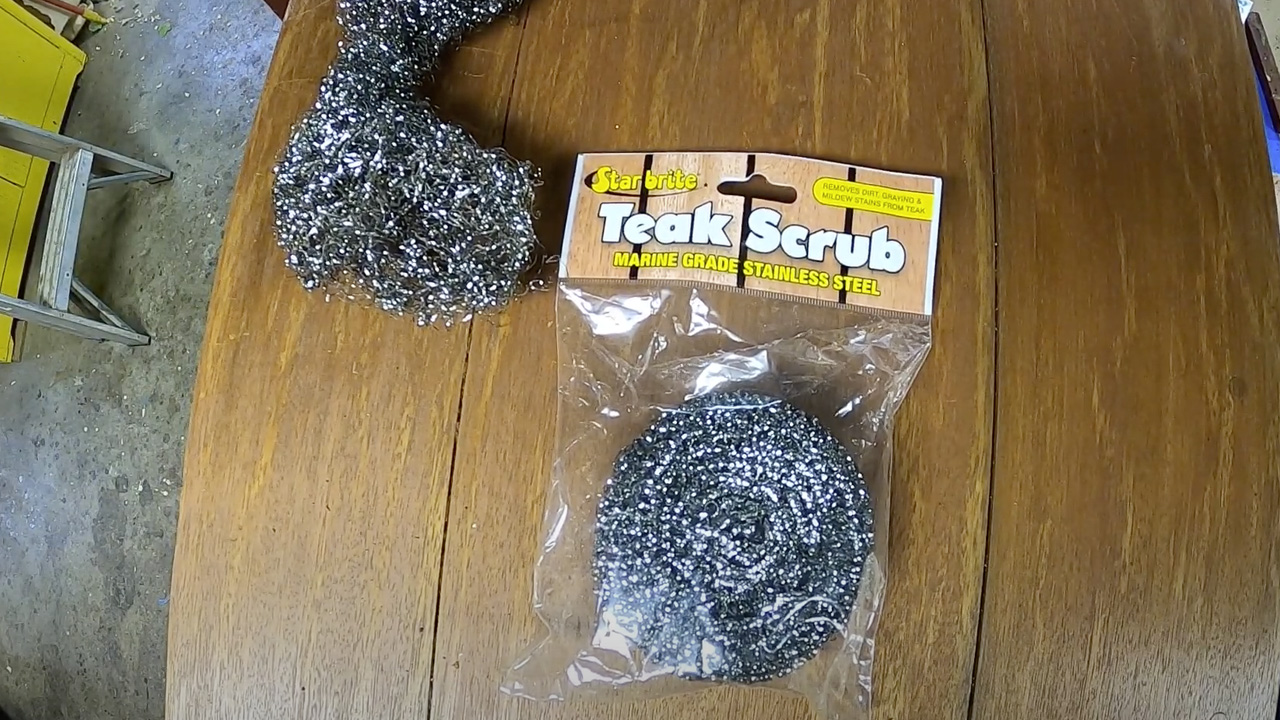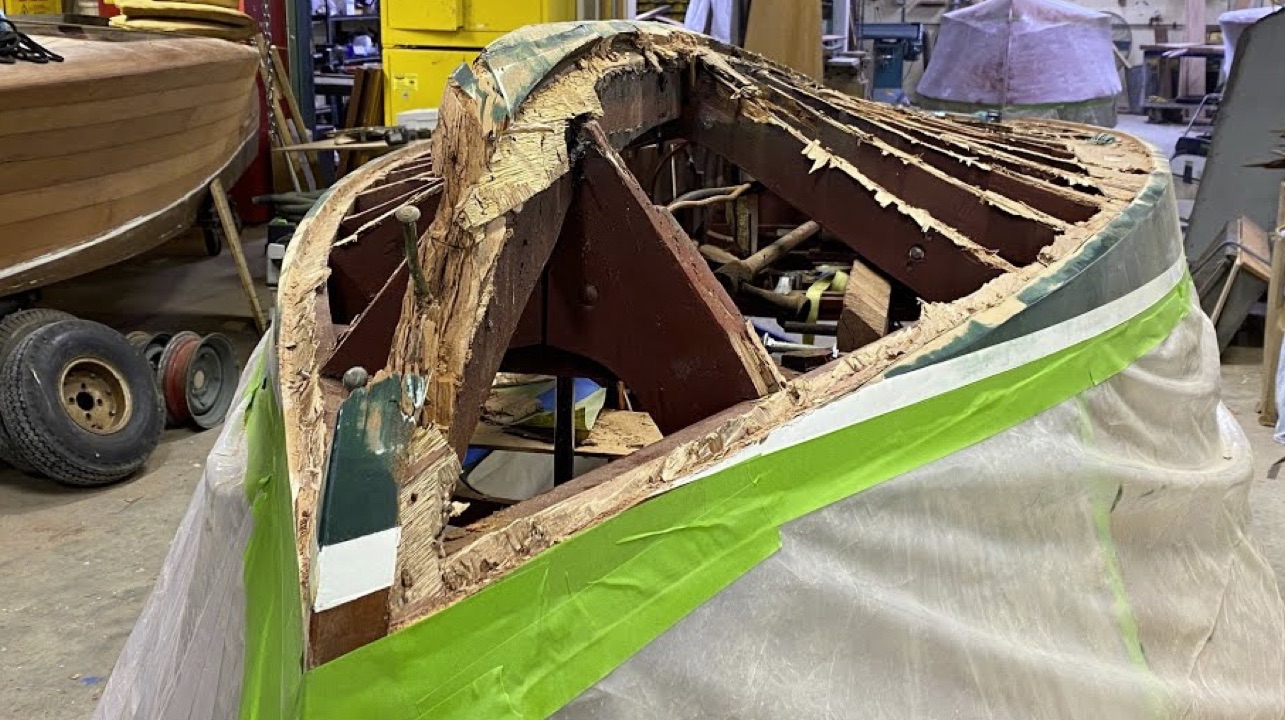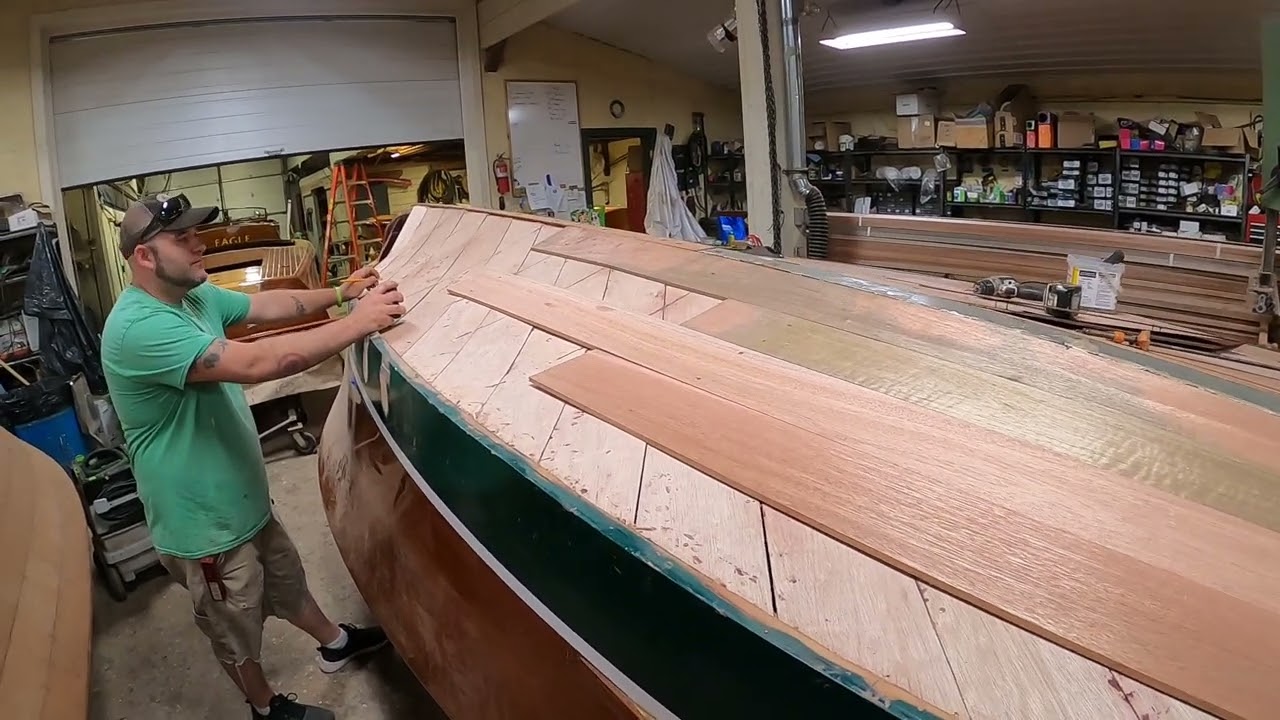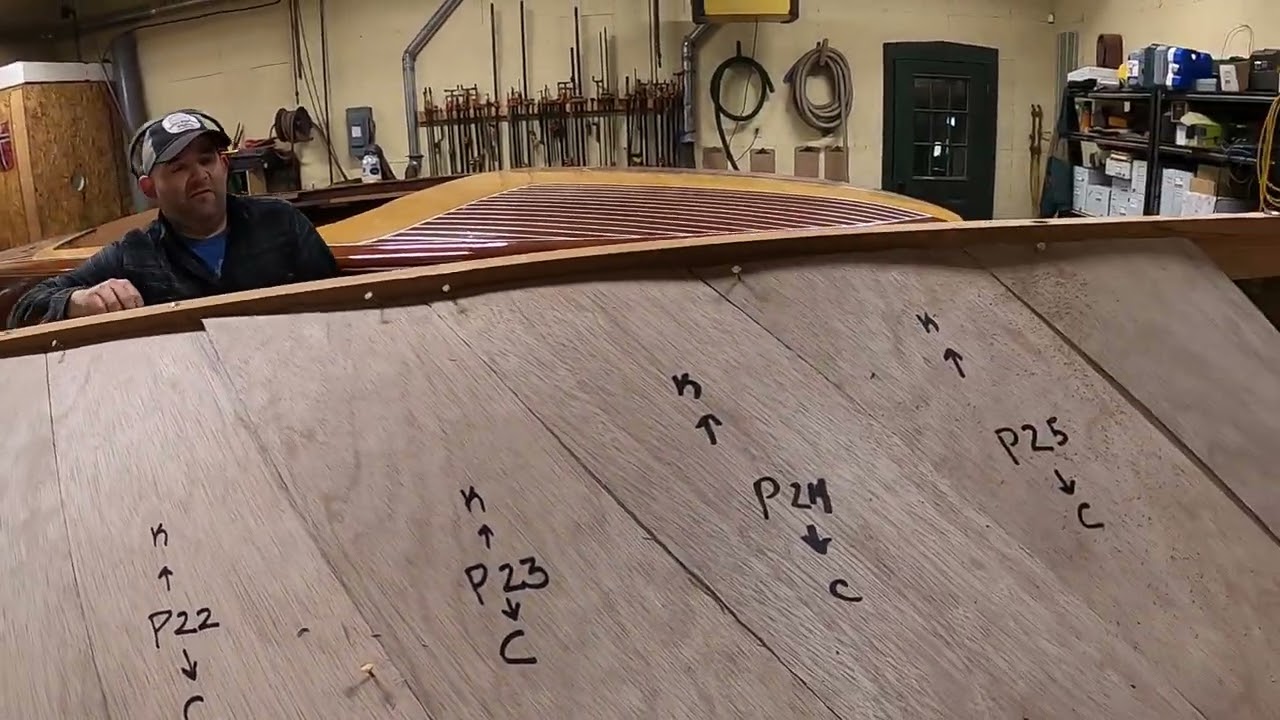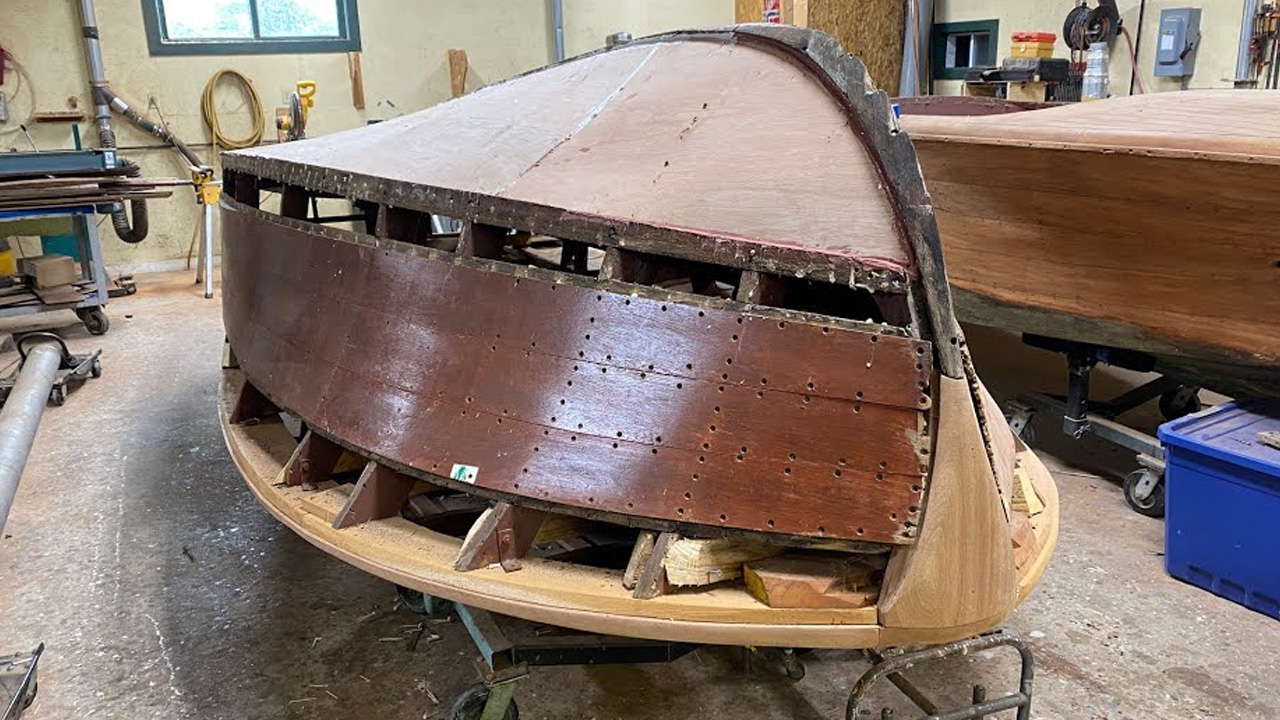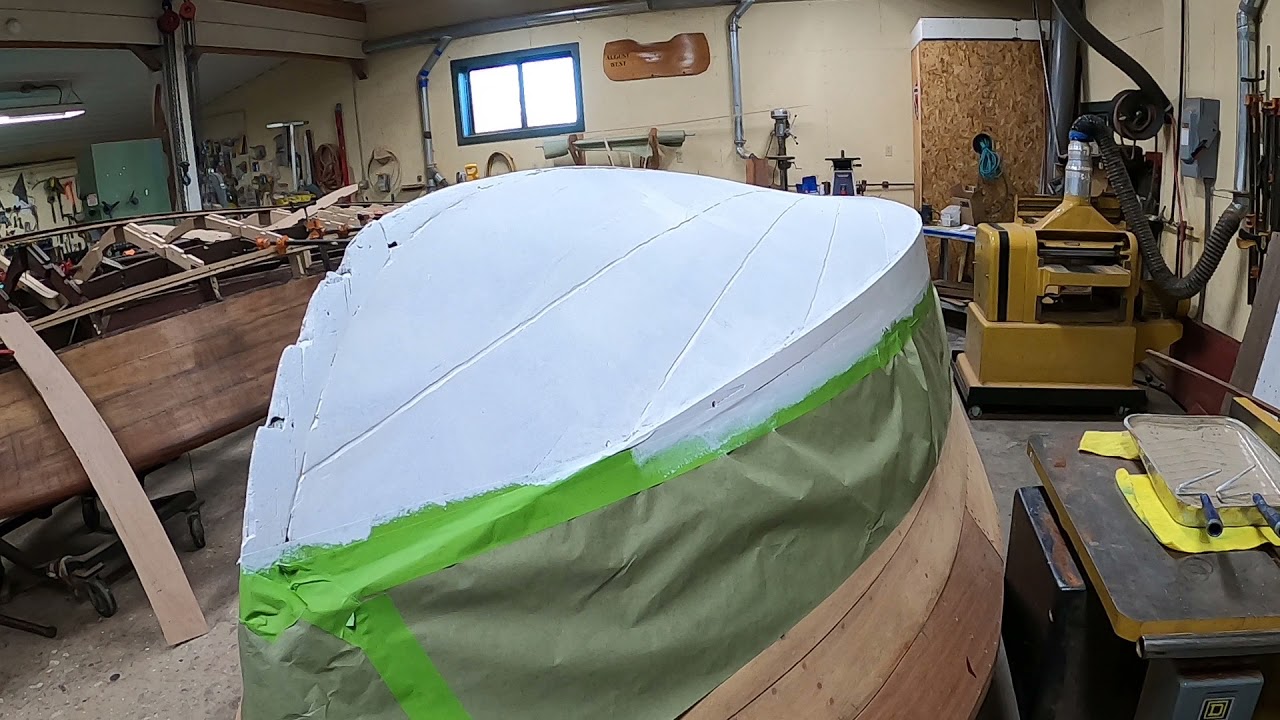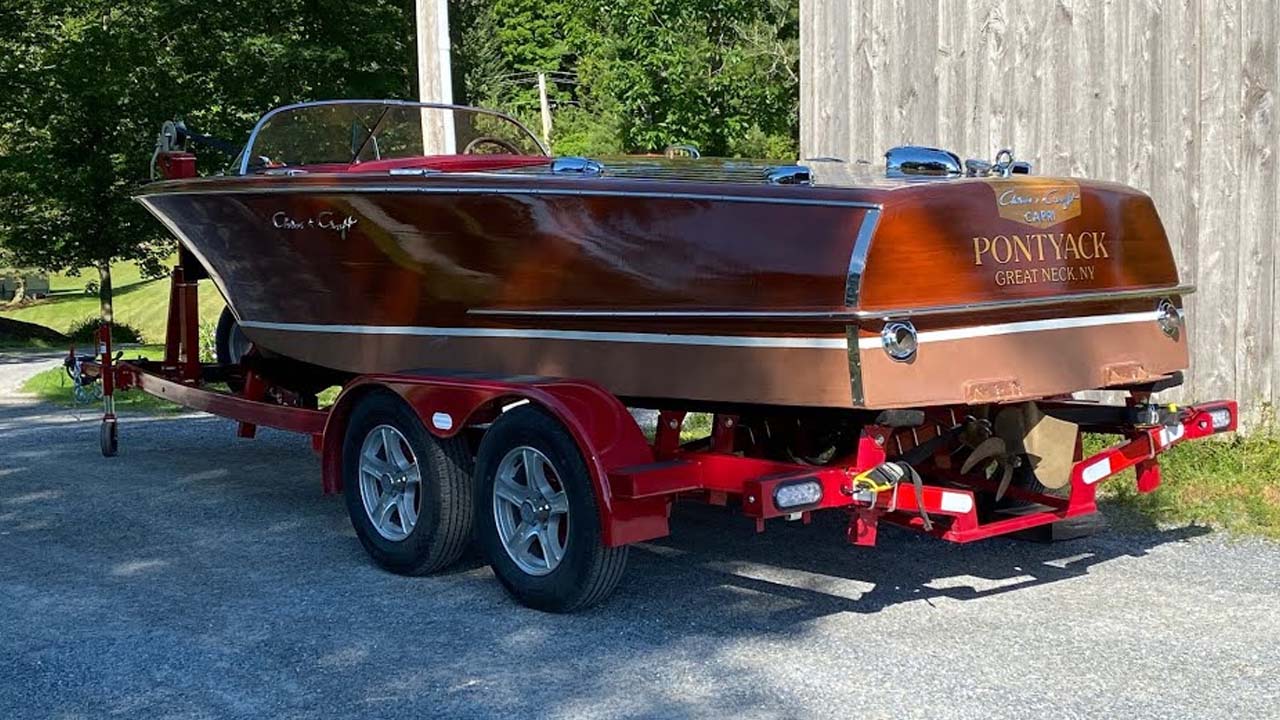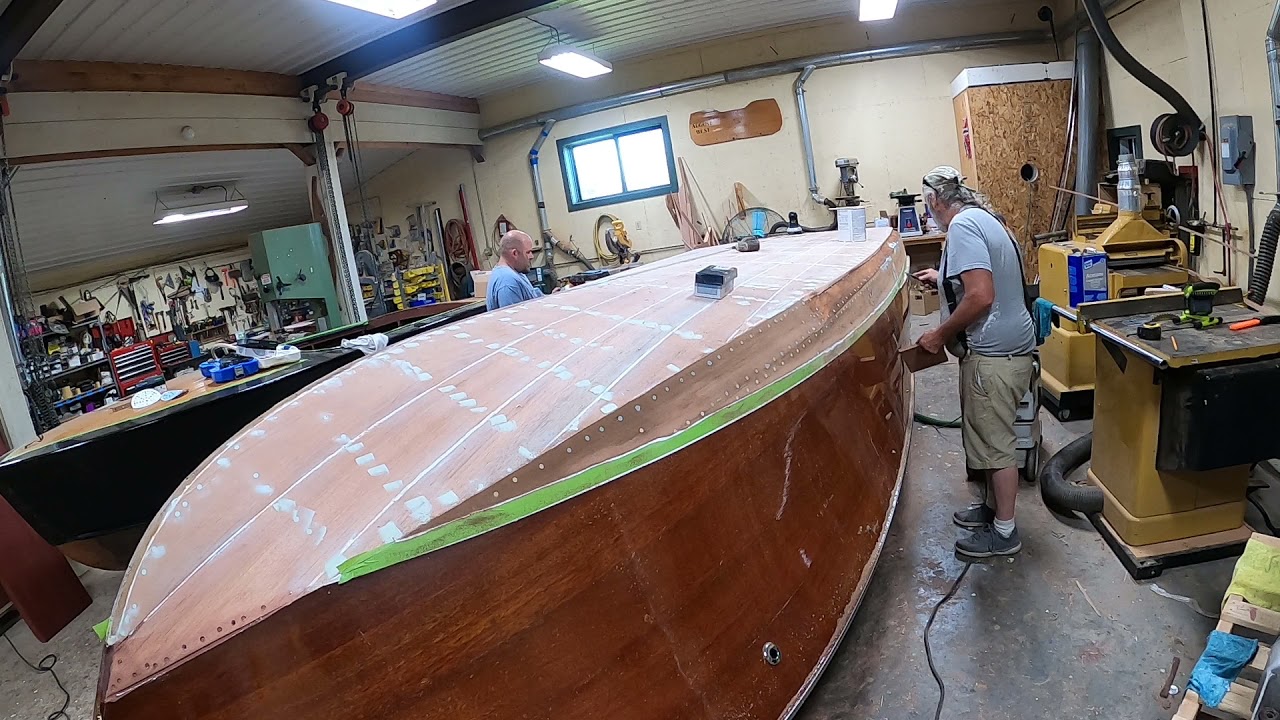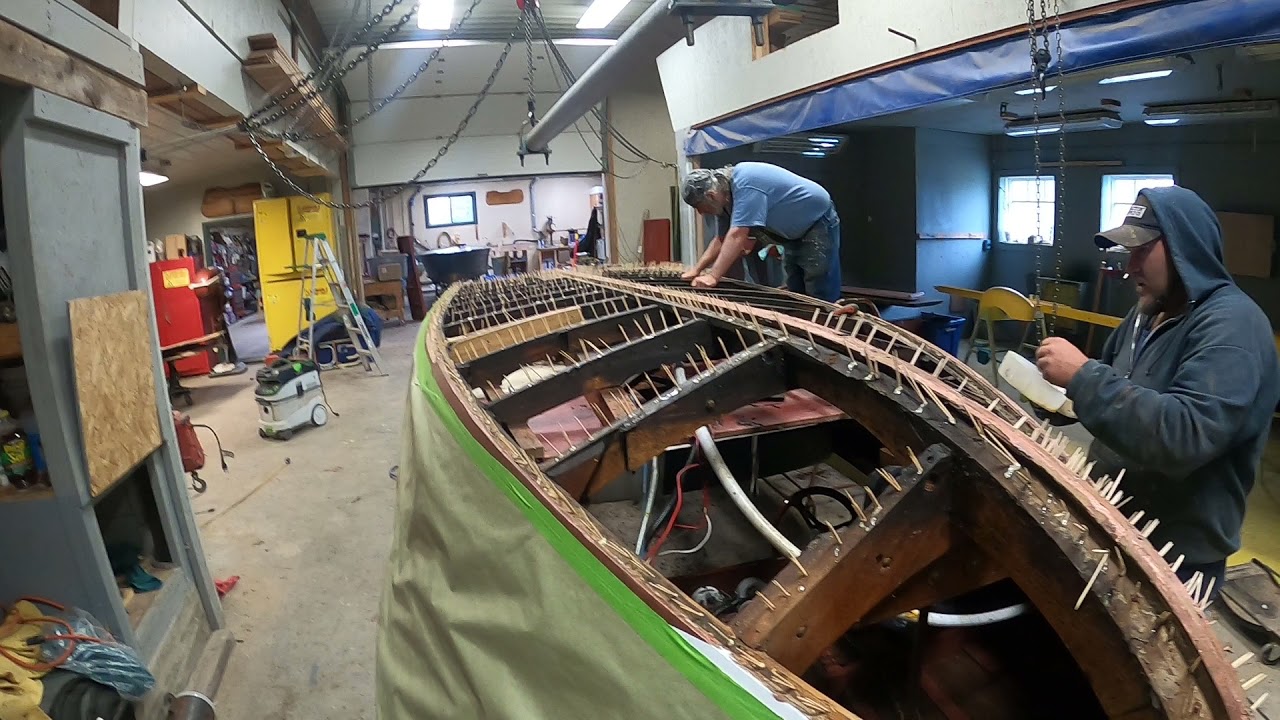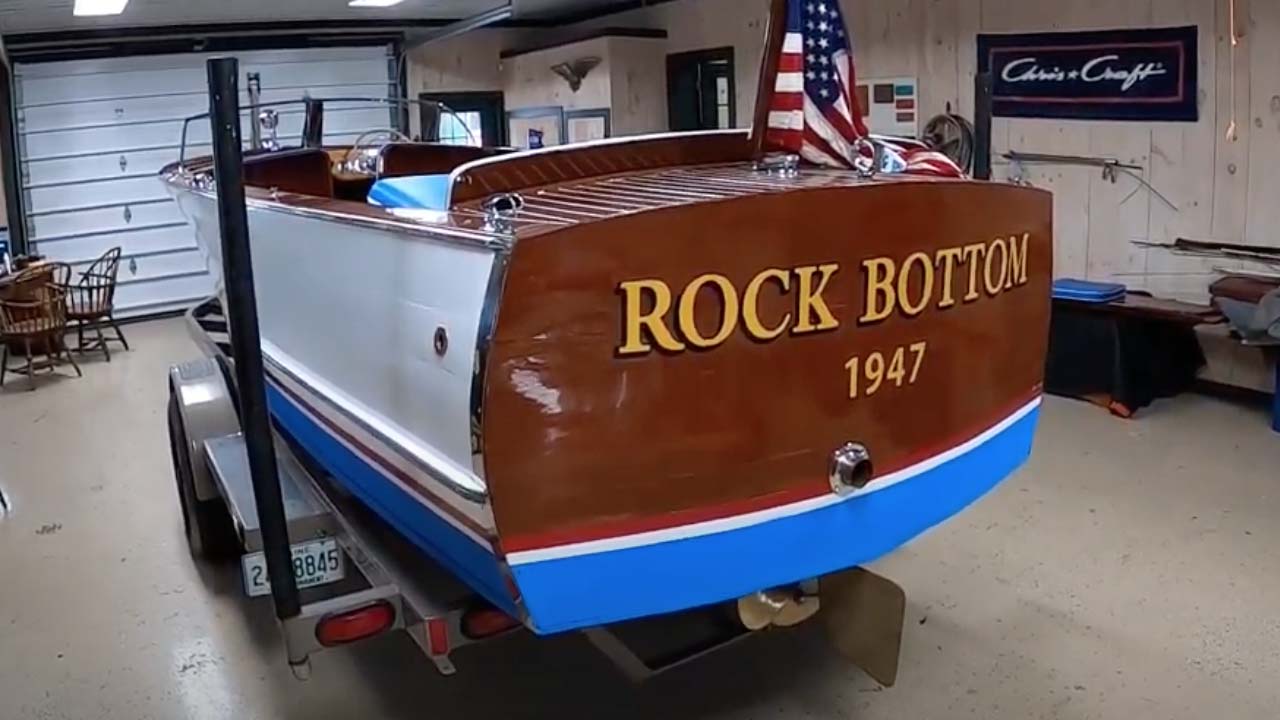Let’s do a bit of how-to this morning.
It has taken you hours and hours of scraping, swearing, swearing some more and scrubbing the old finishes from your woody. Finally, all that old varnish is gone and you are down to “bare” wood.
Really? No, you are not down to bare wood because it will still be adulterated with wood stain. Bleeding that old stain out of the wood is a critical component of achieving a blemish- and blotch-free new finish.
We tried and rejected Scotch Brite pads, in favor of have always used kitchen-grade stainless pot scouring pads here, but they take forever and tend to load up very quickly. They are cheap, however; just $13 for a 12-pad bag of them.
The cheap pads are great for scrubbing varnish and paint, but borderline maddingly limited for bleeding stain out of the wood. I was searching – my wife calls it trolling – Amazon at the end of January, when up popped the Star-brite Teak Scrub marine-grade, stainless scrub pad that is designed for refinishing wood.
Star-brite claims these pads “remove dirt, graying & mildew stains from teak. There is a catch, however. They will cost you $13.34 EACH!
Guess what? These puppies also bleed filler and J’eld stain out of mahogany, oak and white cedar! As such, and even at $13.34 each, they will henceforth be our go-to tool for this no-fun job.
We will still reach for the cheap, old-school pads for removing finishes, but leave them on the shelf when it is stain-bleeding time.

